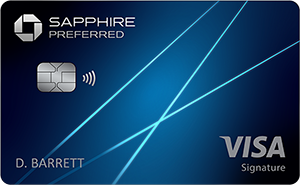Christine Krzyszton ,Jessica Merritt
,Jessica Merritt
Christine Krzyszton
Senior Finance Contributor
353 Published Articles
Countries Visited: 100U.S. States Visited: 45
Christine ran her own business developing and managing insurance and financial services offices. This stoked a passion for points and miles and she now has over 2 dozen credit cards and creates in-dep...
Jessica Merritt
Senior Editor & Content Contributor
177 Published Articles 748 Edited Articles
Countries Visited: 4U.S. States Visited: 23
A long-time points and miles student, Jessica is the former Personal Finance Managing Editor at U.S. News and World Report and is passionate about helping consumers fund their travels for as little ca...
Edited by: Nick Ellis
Nick Ellis
Senior Editor & Content Contributor
282 Published Articles 1126 Edited Articles
Countries Visited: 35U.S. States Visited: 25
Nick’s passion for points began as a hobby and became a career. He worked for over 5 years at The Points Guy and has contributed to Business Insider and CNN. He has 14 credit cards and continues to le...
& Michael Y. Park
Michael Y. Park
Senior Editor and Content Contributor
41 Published Articles 853 Edited Articles
Countries Visited: 60+U.S. States Visited: 50
Michael Y. Park is a journalist living in New York City. He’s traveled through Afghanistan disguised as a Hazara Shi’ite, slept with polar bears on the Canadian tundra, picnicked with the king and que...



![Chase Sapphire Preferred Card – Full Review [2025]](https://upgradedpoints.com/wp-content/uploads/2020/09/sapphire-preferred.png?auto=webp&disable=upscale&width=1200)
![Chase Sapphire Reserve Card – Full Review [2025]](https://upgradedpoints.com/wp-content/uploads/2025/06/Sapphire-Reserve.png?auto=webp&disable=upscale&width=1200)
![Chase Slate® Card — Full Review [2024]](https://upgradedpoints.com/wp-content/uploads/2018/03/Chase-Slate-Card.png?auto=webp&disable=upscale&width=1200)
![24 Benefits and Perks of the Chase Sapphire Preferred Card [$3,700+ in Value]](https://upgradedpoints.com/wp-content/uploads/2019/07/Chase-Sapphire-Preferred-Upgraded-Points-LLC-11-Large.jpg?auto=webp&disable=upscale&width=1200)